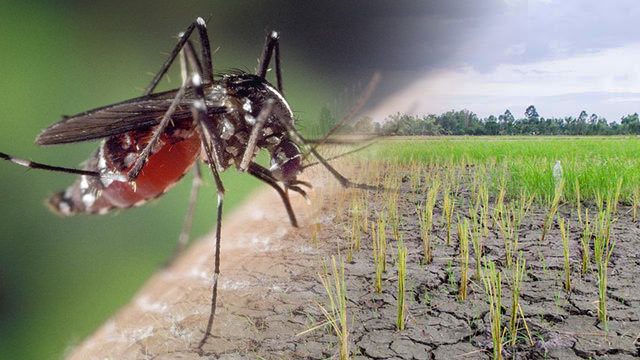SUMMARY
This is AI generated summarization, which may have errors. For context, always refer to the full article.

MANILA, Philippines – The health department expects higher dengue cases in 2016 due to the strong El Niño that is affecting the country.
This was disclosed by Health Secretary Janette Garin on Friday, October 9, during an anti-dengue advocacy activity held at North Fairview Elementary School.
“Supposedly, ang expectations for 2016, tataas siya ng kaunti lang sana [pero] hindi masyado. Pero nung pumasok yung El Niño factor, nakita yung posibleng pagtaas talaga, kasi nandoon yung maramihang pag-imbak ng tubig, tapos ‘pag uulan, talagang mag-iipon ng tubig,” Garin told reporters.
(Supposedly, the expectation for 2016 is that the number of cases will slightly increase. But when the El Niño factor came in, we saw the possibility that it will really increase, because many will store water, and every time it rains, many will save up water.)
Back in March, when state weather bureau PAGASA first announced the onset of the El Niño, it was still a weak weather phenomenon, although the bureau warned about the possibility that it “could become stronger.”
True enough, by September 30, PAGASA said the current El Niño and associated sea surface temperature warming “may further strengthen and is likely to persist until the second quarter of 2016.” (READ: El Niño 2015: How can Filipinos better understand it?)
“Adverse impacts include below normal rainfall that could lead to dry spell and drought conditions in most parts of the country until the first quarter of 2016. Warmer than normal air temperatures are also likely to be felt,” the bureau said in a statement.
Scientists believe the ongoing El Niño could be among the strongest in 65 years. (READ: Palace: Gov’t prepared for El Niño)
Higher budget for dengue program
Dengue, a disease common in tropical and sub-tropical countries in the world, is transmitted through the bite of an Aedes mosquito. Dengue fever is potentially fatal and mainly affects children.
The Philippines is one of 4 countries in the Western Pacific which reported the highest dengue incidence in recent years.
The number of cases is especially high in 2015 compared to 2014, Garin said, since it was in the previous year when many developed an “offshoot protection” because of the massive cases in 2012 and 2013.
According to the World Health Organization, there are 4 types of dengue viruses, and a person can get infected with dengue up to 4 times.
“Infection with one type leads to immunity to that type but subsequent infections with other types of the virus can lead to severe complications,” the UN health agency said.
With the expected increase in 2016, the health department has already increased by 25% its proposed 2016 budget for the dengue program. The program has an allocation of P240 million in the 2015 budget. – Rappler.com
Image of farmer planting in parched land from Shutterstock
Add a comment
How does this make you feel?
There are no comments yet. Add your comment to start the conversation.